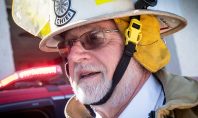Lehigh Valley Amateur Astronomical Society
The sheer vastness of outer space can be staggering. Our nearest planetary neighbor, Mars, is roughly 54 million miles from Earth. Our closest star, the sun, is about 93 million miles from us; the next closest, Proxima Centauri, is a staggering 25 trillion-plus miles away (about 4.24
light-years).
Space exploration has been an endless source of human fascination for millennia, and the 250 members of the Lehigh Valley Amateur Astronomical Society (LVAAS) avidly scan the night skies to catch glimpses of its ever-changing panorama.
The society, formed in 1957, is headquartered along East Rock Road in Allentown, in a building that members constructed by hand in the 1950s. “We hold our general and board meetings there, and have a planetarium and library,” said Eric J. Loch, a society director serving on the public relations committee and owner of Loch Diamond Jewelers in Allentown.
The basic qualification for joining the LVAAS is an abiding interest in astronomy – not necessarily a scientific background. “We have a mix of all kinds of people, Loch said, “including, plumbers, engineers and electricians.”
Nevertheless, the group has its share of members for whom astronomy is a profession. Gary Becker had a 38-year career as planetarium director at Louis E. Dieruff High School in Allentown and is currently assistant adjunct professor of astronomy at Moravian College in Bethlehem. Peter Detterline is astronomy professor at Montgomery County Community College and planetarium director for the Boyertown Area School District.
It’s common for members to hone in on personal “specialties.” “Pete Detterline travels the world, chasing eclipses,” Loch said. “He’s watched them on four or five continents. I prefer looking at galaxies and Carol Kiely, an adjunct professor in materials science and engineering at Lehigh University, is so fascinated by the moon that she’s dubbed herself the group’s “’lunatic,’” Loch added. (It should come as no surprise that Kiely is currently using X-ray ultramicroscopy to study the internal structure of lunar soil particles collected during the Apollo 11 mission.)
The group is much more than a collection of stargazers. “We want to get people interested in astronomy, so we have numerous education, outreach and programs throughout the year,” Loch said. For example, the society participates at the Da Vinci Science center in Allentown, including the annual “Abbie’s Space Party,” which honors the memory of Abbie Zukowski, a budding astronomer from Emmaus who was killed when she was struck by a vehicle while crossing the street at the age of 11.
One Society member is active in scouting, and conducts programs – either at the group’s headquarters on South Mountain or at Pulpit Rock, a pinnacle near Hamburg that offers spectacular views – that help scouts earn their astronomy badges.
Other activities include amateur telescope making, astroimaging and presentations at schools, scouting events and other public venues such as libraries and civic group meetings. LVAAS even puts together a summertime astronomy program at a local country club. “We’ll appear just about anywhere if our schedule will accommodate it,” Loch said, “and our programs are growing in popularity.”
The LVAAS has also hosted a series of popular “star parties” coordinated by Kiely, where members and the general public can gather to view an A-list of celestial bodies. “We always have at least three telescopes on-site for these parties,” Loch said,” and members often bring their own.”
The star-party programs are often orientated to the attending group. “For example, if we have a lot of kids, we might concentrate on showing them a close-up of the moon,” he said. But that’s often a good proposition for adults, too. “You’d be surprised to find how many people of all ages have never looked at the moon through a telescope.”
No two gazing sessions are the same. The night skies differ from season to season as our home planet orbits around the sun. And while stars are in a constant position relative to Earth – you’ll see the same arrangement every March 15, for example, as planets follow their own orbital schedules. Add in the possibility of seeing asteroids, comets or meteor showers, and it’s easy to understand why so many people turn their eyes to the skies.
Want to explore the heavens yourself? Membership in the association allows you to rent several types of telescopes – a sort of “try before you buy” program. “It’s a simple way to determine the type of telescope that suits your needs,” Loch explained. “I like to look at galaxies, so I need an instrument with a larger opening to collect more light. Someone who wants to look at star clusters or planets could get by with a smaller one.”
Loch offers a tip to potential buyers. “Although you can find inexpensive telescopes at discount stores, they often don’t work very well and end up stashed in a closet. But if you invest in a better-quality telescope, you’ll have a more rewarding experience, and the equipment will last a long time.” He also noted that a variety of apps let you direct your phone to the sky and map out the bodies in that area.
For more information about the Lehigh Valley Amateur Astronomical Society, including scheduled events, membership applications, an informative monthly newsletter and more, visit lvaas.org.










